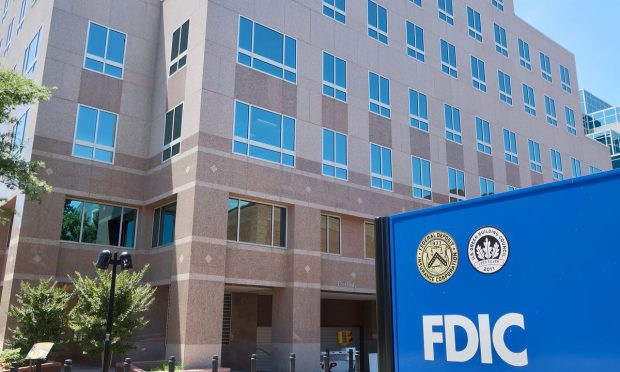US Weighs Expanding FDIC Protections if Banking Crisis Persists

Federal officials are reportedly examining ways to expand deposit protections to halt a possible financial meltdown.
As Bloomberg News reported Monday (Mar. 20), staff members at the Treasury Department are studying whether regulators have the authority to temporarily insure deposits above the traditional $250,000 limit without Congressional approval.
The report, citing people with knowledge of the matter, said officials don’t see such a move as needed but are coming up with a plan in case the banking crisis worsens.
The troubles in the banking sector stem from the collapse earlier this month of Silicon Valley Bank, as well as the subsequent failure of Signature Bank.
Signature Bank was purchased Sunday (Mar. 19) by an arm of New York Community Bank, while the Federal Deposit Insurance Corp. (FDIC) is still seeking bids for SVB.
“There has been substantial interest from multiple parties, and the FDIC and the bidders need more time to explore all options in order to maximize value and achieve an optimal outcome,” the agency said in a news release Monday.
Among the possible buyers is First Citizens Bank, which — as PYMNTS noted this week — has snatched up 20 failed banks in the last 14 years.
As for the possible expanded FDIC insurance plan, the Bloomberg report notes that one possibility being discussed is using the Treasury Department’s authority to take emergency action and tap into the Exchange Stabilization Fund.
The fund, created during the Great Depression, is typically used to buy or sell currency but has been used to support emergency lending by the Fed, and is the only pool of money under the total authority of the Treasury.
PYMNTS looked at this topic earlier this week as part of a larger conversation about the SVB collapse with Amias Gerety, partner at FinTech venture capital group firm QED Investors.
The true policy debate to come forward, he said, is what to do now that it’s become clear the $250,000 deposit “cap” on insured funds no longer works for U.S. businesses.
“That’s a real policy challenge,” Gerety told PYMNTS Karen Webster.
One notion is to charge for deposit insurance, possibly on a risk-adjusted framework — that function is already in place at the FDIC. Gerety argued that this could be a simple, effective, albeit imperfect, change in policy.
At the same time, there’s also a need to rethink the risks and regulations governing regional banks, he said, and whether laws passed under President Donald Trump — making it tougher to regulate banks of SVB’s size — should still stand. Gerety also believes that there needs to be a more thorough examination of the deposit base at smaller and mid-sized banks.
